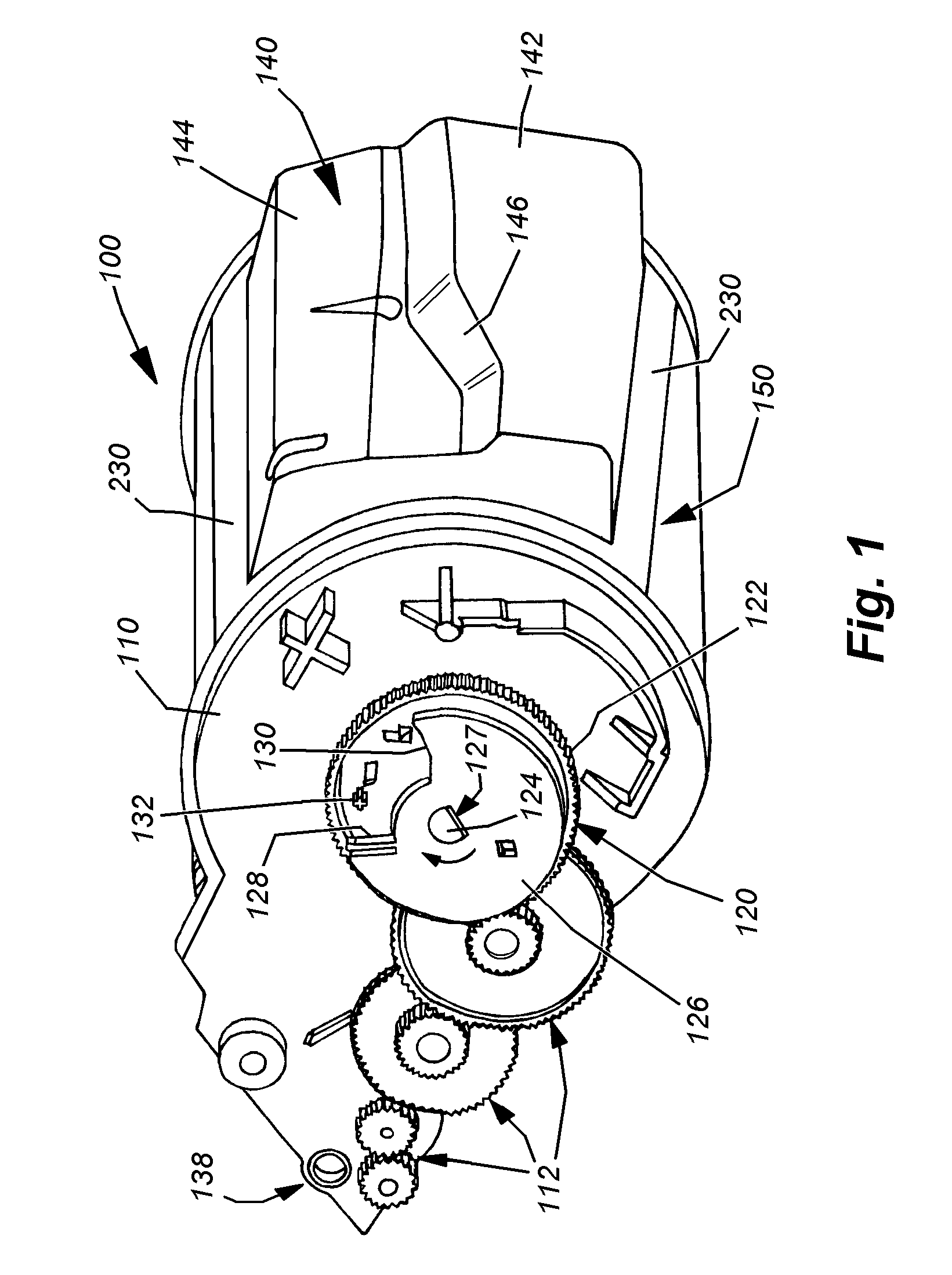High-capacity toner cartridge and toner agitator
a toner agitator and high-capacity technology, applied in the field of toner cartridges, can solve the problems of physical limitations, print engine operation may suddenly cease, and enforce limitations, and achieve the effects of lowering load, facilitating operation, and increasing efficiency
- Summary
- Abstract
- Description
- Claims
- Application Information
AI Technical Summary
Benefits of technology
Problems solved by technology
Method used
Image
Examples
Embodiment Construction
[0026]FIG. 1 details an exemplary toner cartridge 100 for use in accordance with an illustrative embodiment of this invention. This cartridge is employed in, for example, a commercially available T630 print engine, available for Lexmark International, Inc. However, the principles described herein are applicable to a wide variety of other cartridges, available for use in Lexmark and other manufacturers' print engines, including, but not limited to the T620, T630, T640, T520, T530, OptraS, OptraT, and their variations. In general, the teachings herein are applicable to any cartridge that employs an agitator and can deliver toner to the metering area without substantial agitation when filled to a high level.
[0027]The exemplary cartridge 100 includes a housing 110 that supports an external gear train 112. At least one of the gears removably engages a print engine drive motor gear (not shown) when the cartridge is properly installed in the print engine. The main agitator gear assembly 12...
PUM
 Login to View More
Login to View More Abstract
Description
Claims
Application Information
 Login to View More
Login to View More - R&D
- Intellectual Property
- Life Sciences
- Materials
- Tech Scout
- Unparalleled Data Quality
- Higher Quality Content
- 60% Fewer Hallucinations
Browse by: Latest US Patents, China's latest patents, Technical Efficacy Thesaurus, Application Domain, Technology Topic, Popular Technical Reports.
© 2025 PatSnap. All rights reserved.Legal|Privacy policy|Modern Slavery Act Transparency Statement|Sitemap|About US| Contact US: help@patsnap.com



